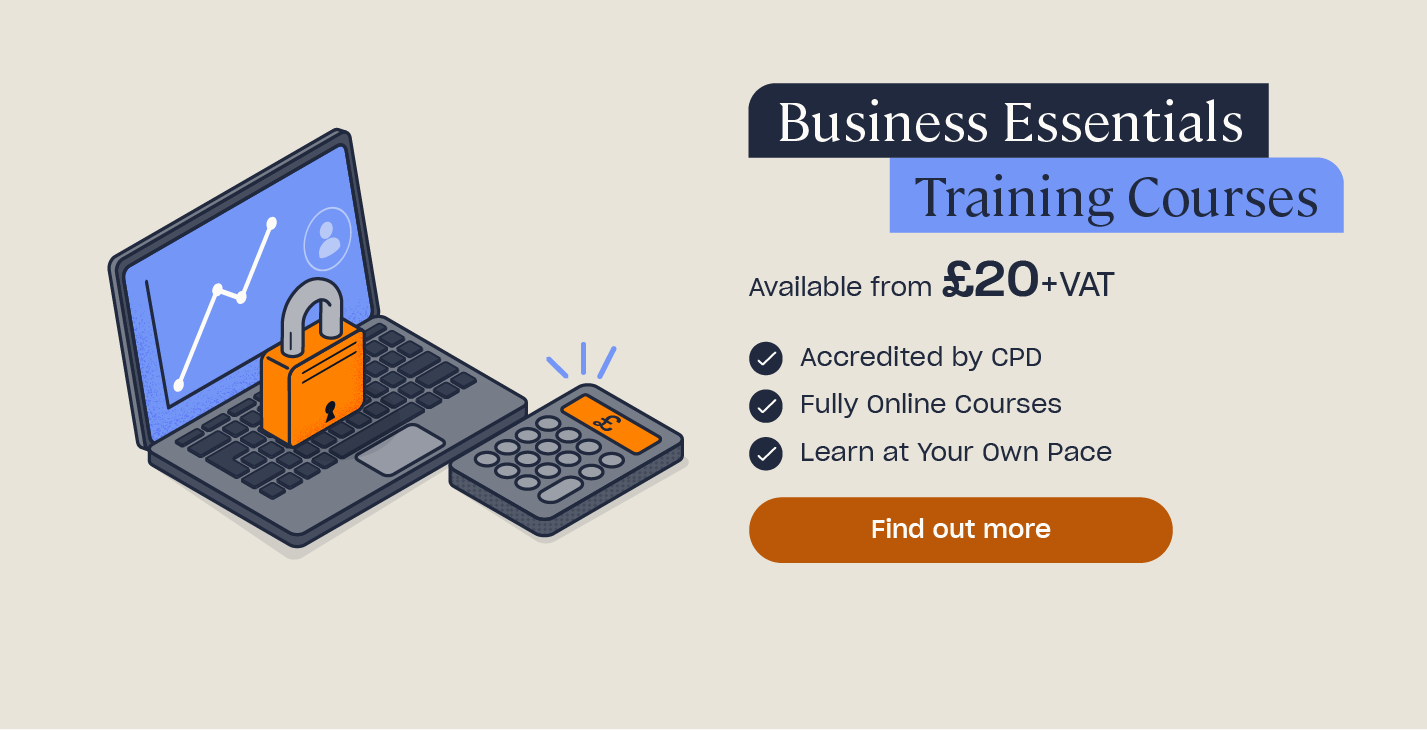How to Write SMART Goals for Employees
Whatever industry or role you work in, setting development goals is crucial to mapping out a plan for your future and ensuring you achieve your ambitions. But having huge aspirations can feel overwhelming. How can you bridge the gap between where you are now and your ultimate ideal destination?
Currently, 80% of people never set goals at all and, out of those that do, roughly 70% fail to achieve them. This is likely due to a lack of specificity when goal-setting. To help make your objectives more achievable, it can help to break them down into smaller steps that are clearly defined and realistic. This is where the SMART method for creating goals can really help.
In this article, we’ll define what SMART goals are, why they are so important for development, and how to set good SMART goals to help advance your career. We’ll also share some examples as inspiration to help you get started with your own goal setting.
What are SMART Goals?
SMART is an acronym that can help to guide your goal setting. It stands for:
- Specific.
- Measurable.
- Achievable.
- Relevant.
- Time-bound.

When creating a personal or professional development goal, you can follow the SMART method by ensuring that your objectives adhere to each of these parameters. This helps to ensure that your goals are realistic, have a clear timeline, and that your progress can be tracked.
Too often, goal setting gets side-lined within a business, but both employees and managers have a responsibility to set goals regularly. Using SMART goals, employees and their line managers can create an actionable plan together which ensures that they continue to grow and develop within their roles. It can also improve performance, increase productivity, and contribute towards company objectives.
Why are SMART Goals Important?
SMART is an effective method of goal-setting as it provides the clarity, focus, and motivation needed to achieve the objectives you set for yourself. Additionally, it’s an easy method that anyone can use without needing additional training or specialist tools. Some of the greatest benefits of using the SMART method to create goals are:
- It provides direction.
- It evaluates your strengths and weaknesses so you’re better aware of which areas you need to improve most.
- It provides motivation.
- It encourages you to take action and directs you out of your comfort zone, which is often where the most progress happens.
- It retains your focus on the end-goal.
- It elicits a continuous sense of achievement by creating regular milestones.
- It allows you to monitor your progress.
- It avoids wasting time on activities that aren’t goal-oriented.

Another reason why SMART goals are important is that they help to foster a growth mindset. A growth mindset is the belief in your ability to develop your knowledge and learn new skills through determination and practise. Once developed, it can help you to overcome challenges and embrace opportunities.
Using SMART goals can help to nurture your growth mindset by ensuring that you achieve frequent milestones, which increases your confidence in your abilities. Additionally, the SMART method allows you to create a clear vision of success, which helps with maintaining motivation – a key aspect of a growth mindset. To learn more about how to develop and maintain a growth mindset in the workplace, read our article on the subject here.
Looking to Learn More?
Knowing how to set good SMART goals is an essential business skill, and one that will be invaluable to anyone in, or hoping to take on, a leadership role. To further enhance these skills, check out our Business Essentials courses. In particular, we highly recommend our Communication Skills and Leadership and Management training.
How to Set SMART Goals
The first step in setting a SMART goal is to think of something you’d like to accomplish in the future. This could be a vague goal to start with, for example: ‘I will increase my sales’. Once you have an end-goal in mind, you can build on it using the SMART acronym to make it more attainable and quantifiable.
Specific
Goals that are specific have a higher chance of being achieved. To make a goal more specific, you can use questions to help narrow down your objective, such as:
- Who is involved in your goal?
- What exactly do you want to accomplish?
- What steps are needed to achieve it?
Using these considerations, we can turn our generic goal of ‘I will increase sales’ to something far more specific such as: ‘I will learn a new sales technique to increase my number of weekly sales.’

Measurable
To allow you to keep track of your goal, it must have set criteria for measuring progress. Without this, you’ll have no way of identifying how near or far you are from achieving your goal. This usually involves setting a numerical target that you’d like to reach or exceed.
For example, we can improve our example goal from: ‘I will learn a new sales technique to increase my number of weekly sales’ to: ‘I will learn a new sales technique to increase my number of weekly sales by 10%.’
Achievable
After specifying your goal and evaluating how you will measure it, it’s time to consider how achievable your current goal is or whether you may need to adjust it. Some things to think about are whether you have the resources needed to achieve your goal, and if not what are you missing? It’s important to strike the right balance of making your goal challenging enough to make it an accomplishment without it being too difficult to complete successfully.
To make your goal more achievable, you could always reduce the measurable aspect that you added in the previous step. For example, rather than looking to ‘increase my number of weekly sales by 10%’, you could reduce this to 5% instead if necessary.

Relevant
Here, you need to consider whether the goal you’ve set for yourself is in line with what your company or team as a whole aspires to achieve. If your goal doesn’t contribute towards company targets, you may successfully deliver your objective but it won’t have an impact on the overall performance of the business. It helps to add a section to the end of your SMART goal clarifying how your personal target will play a part in bigger company aspirations.
For example, we can justify our objective of increasing sales by adding to the SMART goal as so: ‘I will learn a new sales technique to increase my number of weekly sales by 10%. This will contribute more towards team revenue and help to increase monthly profits.’
Time-bound
Finally, to be able to effectively measure success, you must place a time limit on your goal so that you have a deadline to work towards. This can help ensure that you stay on track to achieving your target, and will motivate you to make progress faster. Without a deadline, there is no pressure to make advancements towards your ultimate objective and thus it’s far easier to procrastinate. You can learn more about how to be productive at work in our article, here.
Following this, we can complete our example goal by adding a time restriction such as: ‘I will learn a new sales technique to increase my number of weekly sales by 10% within Q2. This will contribute more towards team revenue and help to increase monthly profits.’
Now that you know how to create a good SMART goal, it’s time to form your own ideas of achievements you’d like to attain in the future, then use the SMART formula to turn them into actionable goals.

Implementing SMART Goals
One way to find inspiration for your goals is to revisit your performance reviews, which you should have regularly with your employer or manager. Within a performance review, you’ll receive feedback that can help you to identify your strengths and weaknesses. Once you know your potential areas of improvement, you can use these to set goals which aim to turn your current shortcomings into your future assets. To learn more about how to use performance reviews to your full advantage, read our article on the subject here.
Lastly, once you have your list of objectives for the future and have turned them into SMART goals, it’s important to format these into a personal development plan (PDP). This is a formalised template that helps you to keep track of where you are in your progress towards achieving each of your goals. Whereas the SMART formula helps you to create individual goals that are achievable and measurable, a PDP helps you to view all of your goals together and decide which to prioritise. It can also be used to monitor your personal growth over time. Need help getting started? Take a look at our free downloadable PDP guide and template.
Examples of SMART Goals for Employees
It can be hard to know where to start with setting goals, particularly ones that fit every part of the SMART formula. Here are a few examples of professional development goals that you could edit to fit your individual aspirations:
- Attend three industry events each month this year, and speak to five people at each to improve your networking.
- Complete an online course in the next month to improve your knowledge in a specific area and increase your level of efficiency within your role. (To help personalise this goal, why not visit our course library and browse one of our many training opportunities to find the right one for you.)
- Research a new competitor every two weeks to improve the knowledge of the market and identify areas of improvement in your company for the next quarter.
- Lead three team meetings within the next two months to build confidence in directing discussion and improve your presentation skills. (Our article on How to Speak up in Meetings is a great starting point for this goal.)
- Learn a new tool/software; XX, to build on your abilities and improve productivity by XX% by the end of the quarter.
- Dedicate 30 minutes per week to self-reflection to evaluate your performance and proactively seek areas for improvement until the end of the quarter. (As part of this self-reflection, you may want to consider ways to work on your emotional intelligence, as this is a vital skill in every workplace that can always be improved.)

We hope you found this article on how to write SMART goals useful. Personal development is extremely important in driving career progression and ensuring that you stay motivated in your role. Using the SMART method to create personal development goals increases the likelihood that you’ll succeed in your aspirations, as they help to ensure that your objectives are realistic, measurable, and include a deadline to work towards.
Further Resources:
- A Personal Development Plan (PDP) Guide & Template
- How to Develop a Growth Mindset in the Workplace
- How to Upskill Yourself
- Writing A Professional Development Plan – Example & Template
- Business Essentials Courses







